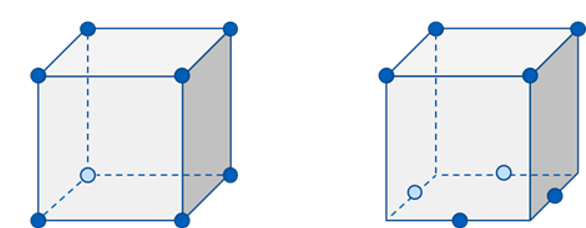Choosing the anchors' locations
For 2D positioning
Place the anchors high and in line-of-sight of the tags.
Placing the anchor high (on the ceiling or on the walls) increases the chance of receiving a good signal because there are less obstructions. Obstructions generally have a negative influence on the accuracy of the range measurements which has a direct effect on the positioning accuracy.Spread the anchors around the tags. Don't place them on a straight line.
For range-based systems, a single range measurements will only give information in a single direction. This direction is exactly the direction from the tag to the anchor. Because of this, it is best to spread the anchors such that they cover all directions. If the anchors are all on a straight line, the positioning error will be very large: A small change in radius (for example due to noise), will result in a very large change in the position of the intersection(s). In other words, the error on the range measurements is amplified! This is the same principle as in GPS, where it is called the geometric dilution of precision (GDOP).Make sure each anchor sees at least two, but preferably more neighbouring anchors at a distance of not more than 15 to 20 meters, or even less in environments with many obstacles.
It’s very important that the clocks of the anchor are accurately synchronised with each other1, and this happens through UWB. It’s therefor important that not only the tags have line-of-sight to the anchors, but also that the anchors have a line-of-sight with each other.Place anchors vertically, with the connectors at the top. This keeps the antenna at the bottom.
Materials like metal, water and wires should stay away from the anchors, especially the antenna.
Within a few centimeters from the antenna, there should be no metal at all, not even small screws (this holds for the tag antenna too).It is recommended to have a separation of 20 cm between the anchor and walls. Our mounting equipment can be used to achieve this.
For 3D positioning
Keep to the guidelines from above but place anchors at different heights.
The accuracy of the z coordinate will highly depend on the spread in heights of your anchors. Ideally, it is advised to place your anchors in the shape of a cube around your positioning zone as shown below. Try to maximize the distance between the lower and higher anchors.Twist the base surface of your cube 45 degrees as compared to the top surface.

Twisting the base surface will reduce the 3D convex hull of the anchors (e.g. the bottom corners of the cube are outside of the convex hull), but it will generally give you a higher chance of line-of-sight between a tag and the anchors. E.g. when your body is blocking 1 corner of the room it will just block line-of-sight with 1 anchor instead of 2.
Furthermore its better for the tag to be surrounded by anchors from as much directions as possible.Place the bottom anchors upside down as this will point the antenna upwards (= towards the tags).
